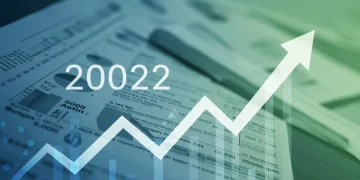Revamp in teacher licensing procedures for better teaching
Revamping teacher licensing procedures streamlines the certification process, enhances teacher quality, and facilitates the entry of qualified educators into the teaching profession through technological innovations and supportive mentorship programs.
Revamp in teacher licensing procedures could significantly reshape the educational landscape. By rethinking how we certify teachers, we can enhance teaching quality and ensure that every student receives the education they deserve. Ever considered how these changes impact classroom experiences?
The need for change in teacher licensing
The education sector is evolving, and the need for change in teacher licensing has never been more pressing. As classrooms become more diverse and technology-driven, it’s crucial that licensing procedures adapt to these challenges.
To fully understand this, we must consider what drives the demand for a revamped system. Inefficient processes can hinder the entry of talented educators into the classroom.
Key Drivers for Change
Several factors highlight the necessity for updates in teacher licensing:
- Increasing diversity among students
- Advances in educational technology
- Need for flexible pathways into teaching
Moreover, as we seek to attract high-quality candidates, the traditional methods may not suffice. Innovative approaches can optimize the recruitment and training of teachers.
Benefits of a Revised Licensing Process
A comprehensive change in teacher licensing can lead to numerous advantages. For instance, a more streamlined process would not only save time for aspiring teachers but also improve the overall quality of education.
Flexible licensing pathways would encourage individuals from various backgrounds to enter the teaching profession. This leads to a richer educational experience for students, as diverse teaching perspectives enhance classroom dynamics.
In addition, implementing ongoing professional development as part of the licensing process can ensure that teachers continually improve with the changing landscape of education. Lifelong learning should be a cornerstone of teacher certification, making educators more adaptable and effective in their roles.
Overall, the focus on reforming teacher licensing is essential for establishing an educational environment that is not only inclusive but also innovative.
Current challenges in teacher licensing processes
Teacher licensing processes face numerous obstacles that can hinder the entry of qualified educators into schools. Understanding the current challenges is essential for implementing effective changes.
Many teachers encounter complex requirements during the certification journey. For instance, lengthy applications, extensive testing, and insufficient support can make the process daunting.
Challenges Faced by Aspiring Teachers
- Bureaucratic hurdles that delay approval
- High costs associated with testing and certification
- Lack of clear guidance for applicants
Moreover, these challenges can disproportionately affect individuals from diverse backgrounds. The traditional licensing system may not accommodate the unique experiences and skills that these aspiring teachers bring to the classroom.
In addition, many states have different requirements, leading to confusion for candidates who relocate or wish to teach in different regions. This inconsistency can also complicate matters for schools seeking to hire qualified teachers.
Technological Limitations
Besides procedural issues, there are technology-related constraints impacting the teacher licensing process. With many educational institutions moving towards digital solutions, outdated systems can create barriers for applicants.
A lack of integration between various licensing platforms can lead to data discrepancies and increased workload for administrative staff. All these factors contribute to a cumbersome experience for those pursuing a teaching career.
Addressing these current challenges is crucial. Simplifying processes, providing clear information, and enhancing technological capabilities can pave the way for a more efficient system.
Innovative solutions for effective teacher certification

As the landscape of education changes, there is a growing need for innovative solutions to enhance teacher certification processes. These solutions can help streamline requirements and ensure that aspiring educators are well-prepared for their roles.
Emerging technologies are paving the way for new approaches in certification. For instance, online platforms can facilitate easier access to courses and assessments. This flexibility allows candidates to progress at their own pace, enriching their learning experiences.
Key Innovations in Teacher Certification
- Digital portfolios for showcasing teaching skills
- Simulation-based assessments to evaluate classroom readiness
- Mentorship programs connecting new teachers with experienced educators
Incorporating digital portfolios gives candidates a platform to showcase their achievements and teaching strategies effectively. This method can replace traditional, one-size-fits-all assessments, providing a richer evaluation of teaching skills.
Simulation-based assessments are particularly valuable. They allow candidates to demonstrate their classroom management abilities in realistic scenarios. This hands-on approach can help identify strong candidates who may thrive in real-life teaching situations.
Collaboration and Support
Innovative solutions also foster collaboration between schools and teacher preparation programs. By creating partnerships, institutions can design practical experiences that align with current educational needs. This collaboration helps future teachers become accustomed to the challenges they’ll face.
Mentorship programs connecting new teachers with seasoned educators can provide necessary support and guidance. This relationship not only supports professional growth but also enhances retention rates among new teachers. When teachers feel supported, they are more likely to remain in the profession and positively impact their students.
Adopting these innovative methods can lead to a more effective teacher certification process. By leveraging technology and emphasizing collaboration, we can cultivate an educational environment where educators thrive and students benefit.
Impact of streamlined licensing on teacher quality
Streamlined licensing processes can significantly enhance teacher quality in schools. When the certification process is efficient and clear, it opens the door for talented educators to enter the profession more easily.
One of the primary benefits of a streamlined licensing system is that it reduces the time and effort required to become a teacher. With less bureaucracy, candidates can focus on building their skills rather than navigating complex procedures. This efficiency is vital to attracting and retaining the best individuals in teaching roles.
Factors Contributing to Teacher Quality
- Faster entry into the profession for qualified candidates
- Increased focus on meaningful assessments
- Better support and mentorship opportunities
Additionally, a simplified process allows for a stronger emphasis on meaningful assessments of teaching abilities. Instead of spending time on unnecessary paperwork, aspiring teachers can dedicate energy and resources to developing practical skills. This results in more qualified educators entering classrooms prepared to make a positive impact.
Moreover, when licensing is streamlined, mentorship programs can flourish. New teachers benefit from guidance and support from seasoned educators, fostering professional growth. High-quality mentorship is crucial in addressing challenges faced during the early years of teaching.
Long-Term Benefits for Schools
The long-term impacts of improved teacher quality can be profound. Schools that hire well-prepared teachers tend to see higher student achievement. When educators are confident and skilled, they create learning environments that engage students and promote success.
Furthermore, retaining quality teachers becomes easier with a more efficient licensing process. When teachers feel supported and valued, they are less likely to leave the profession. This stability benefits students and helps cultivate a positive school culture.
Ultimately, the impact of streamlined licensing on teacher quality cannot be overstated. By simplifying the certification process, we can foster an educational setting that nurtures skilled teachers and, in turn, enhances student outcomes.
Future trends in teacher licensing systems
The future of teacher licensing systems is evolving rapidly, embracing innovative trends that aim to enhance the teaching profession. As the educational landscape shifts, new approaches to licensing will be essential for adapting to the needs of students and educators alike.
One significant trend is the increasing integration of technology in the licensing process. With online platforms becoming more prevalent, aspiring teachers can benefit from easier access to resources and assessments. This digital transformation makes the certification process more efficient and accessible.
Key Trends Shaping Teacher Licensing
- Emphasis on competency-based assessments
- Incorporation of micro-credentials for specialized skills
- Utilization of data analytics for personalized learning paths
Competency-based assessments are gaining popularity, focusing on practical skills rather than just theoretical knowledge. This change encourages candidates to demonstrate their abilities in real-world scenarios, ensuring that they are well-prepared for classroom challenges.
Furthermore, the rise of micro-credentials allows teachers to earn recognition for specific skills or knowledge areas. This means educators can continuously improve their expertise while making their resumes stand out. Schools can also benefit from having a workforce that possesses a diverse set of skills tailored to their specific needs.
Data-Driven Decisions
An exciting development is the use of data analytics in shaping teacher training and licensing processes. By analyzing trends in student performance, schools can tailor training programs to address specific areas that need improvement. This data-driven approach enables a more personalized pathway for teacher development.
As new technologies emerge, we can expect to see ongoing changes in how teacher licensing systems operate. From virtual simulations to artificial intelligence, the tools available for assessing and training educators will only continue to improve.
Ultimately, the future of teacher licensing systems hinges on flexibility and responsiveness to the educational environment. By embracing these trends, we can ensure that teachers are well-equipped to inspire and educate the next generation.
In conclusion, the evolution of teacher licensing is crucial for improving the quality of education. By streamlining processes and embracing innovative solutions, we can attract and support the best educators. With a focus on technology and flexible pathways, teacher certification will become more efficient and effective. These changes will ultimately lead to better outcomes for students and empower teachers to excel in their roles.
FAQ – Questions about teacher licensing reform
What are the main benefits of streamlined teacher licensing?
Streamlined teacher licensing reduces barriers, making it easier for qualified individuals to enter the profession quickly.
How does technology enhance the licensing process?
Technology facilitates online assessments and training, making the process more efficient and accessible for aspiring teachers.
What role do mentorship programs play in teacher licensing?
Mentorship programs provide new teachers with support and guidance, improving retention rates and teacher effectiveness.
Why is data-driven decision-making important in education?
Data-driven approaches help tailor training programs to meet the specific needs of teachers and students, leading to improved educational outcomes.





